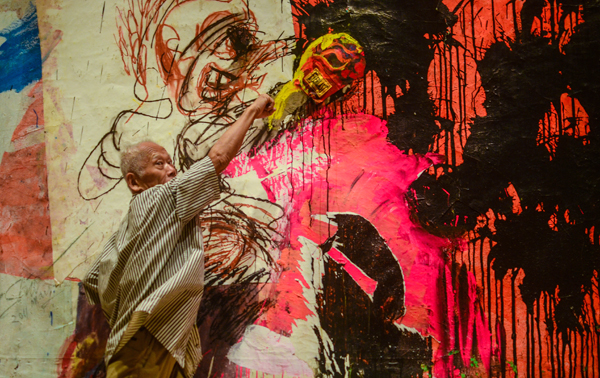
 Tokyo, New York City and the Hudson Valley are finding common ground at the Dorsky this semester.
Tokyo, New York City and the Hudson Valley are finding common ground at the Dorsky this semester.
Two new exhibitions, “Russel Wright: The Nature of Design” and “Shinohara Pops! The Avant-Garde Road, Tokyo/New York,” will be on display at the museum through Dec. 16.
“Russel Wright: The Nature of Design” features the work of Russel Wright, an industrial designer who had close ties with the Hudson Valley later in his life. Wright lived at his home and design project, Manitoga, in Garrison from the mid-1960s on, co-curator Donald Albrecht said.
Sarah Pasti, director of the Dorsky, said the exhibition has been a long time coming.
“It has been in the works for several years,” she said. “It was organized together with Manitoga/The Russel Wright Design Center in Garrison, N.Y., and was scheduled for the fall semester because this time of year is when the Manitoga landscape is at its most beautiful.”
She said she hopes the exhibition will inspire students’ interest in Wright and other Hudson Valley artists, citing the region’s long-held status as a hub of art and culture in New York State.
“Russel Wright is just one of many artists who came to the Hudson Valley seeking respite from the heat of New York City summers and the creative inspiration of our area’s mountains, forests and rivers,” Pasti said.
Albrecht, who is curating in the Hudson Valley for the first time, said that the “built-in student body” will make New Paltz a good place to exhibit Wright’s work.
“One hopes [the exhibition] reveals ideas about a house that’s actually nearby,” Albrecht said, “Maybe it will spark people to go see it.”
“Shinohara Pops! The Avant-Garde Road, Tokyo/New York,” the exhibition on Ushio Shinohara, was curated by Hiroko Ikegami in collaboration with Reiko Tomii.
Shinohara, now a New York-based artist, was part of the 1950s Tokyo avant-garde scene, and has enjoyed a long career, working with various media and creating experimental pieces like his Boxing Art series.
Mary Hafeli, dean of the School of Fine and Performing Arts, said the exhibition was chosen, in part, because it will nicely complement the campus-hosted New York Conference on Asian Studies, which takes place Friday, Sept. 28 and Saturday, Sept. 29.
Hafeli said Shinohara’s work will also be of great interest to all students in the art department, including education majors creating lessons based on the pieces.
“It will be wonderful for them to see not only how a globally acclaimed artist’s work evolves over a long career, but also how his innovative approaches to art making grew out of and influenced various art movements of his time,” she said.
While the two exhibitions may seem markedly different, Pasti said that they do complement each other.
“What I personally find interesting about showing the works of these two artists together is that each of the artists was influenced by the art and culture of the other artist’s country of origin,” she said.
Pasti said she is optimistic that the museum can bring more attention to Shinohara, who she said has been under-appreciated in America, and to the later, lesser-known experimental works of Wright, including Manitoga.
“I hope that we will be recognized for our role in drawing attention to these important ‘hidden treasures,’” she said.
